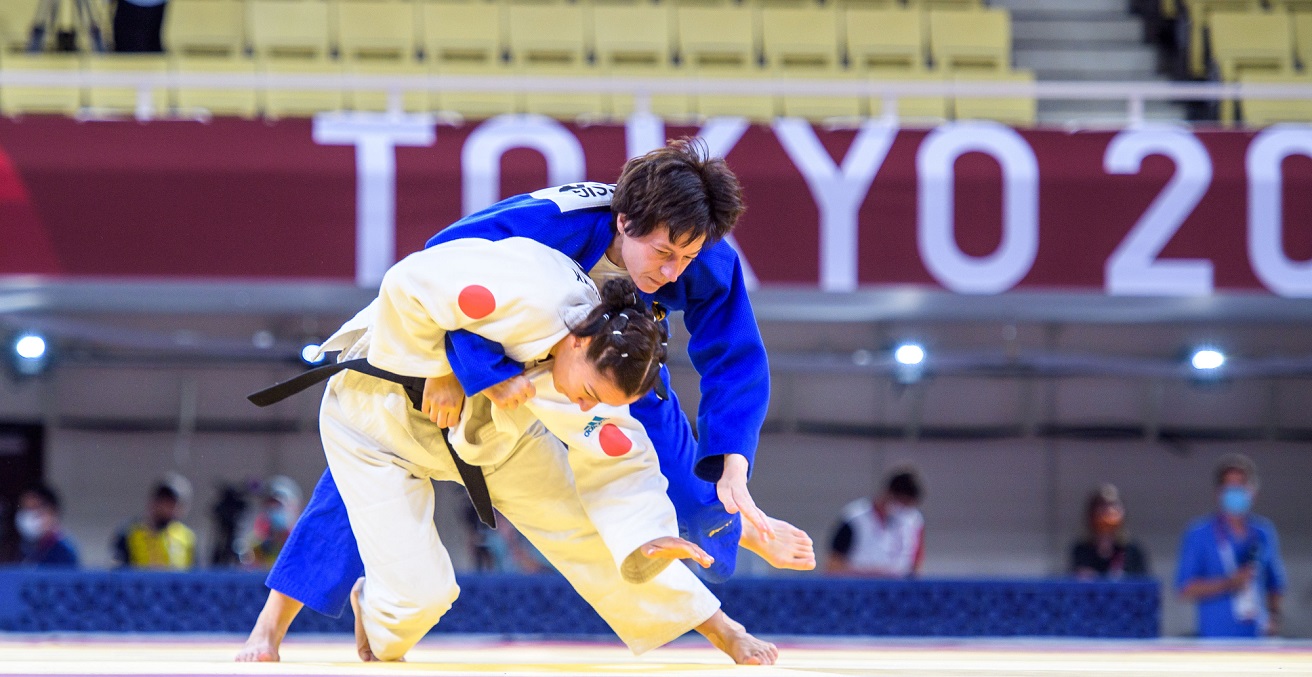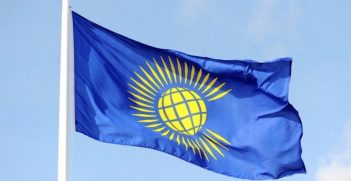An Unfinished Race: The Tokyo 2020 Paralympic Games’ Fragile Legacy

Japan did not perform particularly well at its own Paralympics in 2021. What institutional failings led to this outcome and how have different initiatives influenced disability policy?
It took one minute and 21 seconds of freestyle swimming for Takayuki Suzuki to go down in history as the first gold medalist for Japan at the Tokyo 2020 Paralympic Games. Struggling in second place for the majority of the race, Suzuki launched his way past his main competitor in the last twenty meters. As he touched the black panel that signified the finish, he looked up through his silver glasses to see he had won gold. With a swing of his arm and a loud yell he celebrated his own moment in history. Only a handful of athletes, officials, and volunteers were there to directly witness it. No audience was allowed to join in on the Paralympic fray. Suzuki’s celebration in a near empty stadium would come to symbolise the rest of the games. An ephemeral achievement only felt by a few people.
Tokyo’s second games
The Paralympic Games are the second largest sporting event on the planet, second only to the Olympic Games. There is one major difference between the two: the Paralympic Games are for people with disabilities. Although it is also a mega sports-event, its mission is different: “diversity and inclusion” through sports, and the “empowerment” of people with disabilities.
In scale, the Tokyo Paralympics were the largest edition held since the inception of the original Stoke Mandeville Games from which they arose in the immediate post-war era. It is also the first time that the International Olympic Committee and International Paralympic Committee set the standard of dual sponsorship for attracting global sponsors. This meant this time around, more than ever, the global spotlight was on the Paralympic Games.
The 2020 Paralympics were the second to be held in Tokyo, after the 1964 edition. The first Paralympics held in Japan promised to be a catalyst for change for people with disabilities in Japan, with even the crown prince and his wife attending. Despite this promise, a long-lasting legacy was not realised. They were followed by a growing exclusion of disabled people through institutionalisation, and in the end, the 1964 Paralympics were more about the affirmation of Japan’s growing international importance than anything else.
Progress in disability rights in the country can therefore not be attributed to this moment in history. It was through decades of activism, and a protracted and transnational movement that disability rights were sporadically itemised on Japan’s domestic political agenda. Both individual activists and disability rights groups have demonstrated, spoken out, and started their own independent living facilities, all in a bid to be treated as equal citizens.
This time around we see another set of similar promises. With decades of activism to lean on, Tokyo 2020 and their mission should have been an excellent opportunity to further the emancipation of a chronically marginalised group, thereby leaving a long-lasting Paralympic legacy. Now that the Paralympic flame has been extinguished, can we say this is the case?
A fragile legacy for disability rights
Despite its role as the host nation, Japan did not perform particularly well at its own Paralympics. In contrast to the historical haul of 27 gold medals Japanese athletes took home at the Olympics, the gold medal count at the Paralympics came down to thirteen. This is less than the number Japan won at the 1988 Seoul and 2004 Athens Summer Paralympics. No historical gold medal hauls this time around. How did this happen?
One important factor is that Japan’s sports culture is organised around its education system, with students enrolling in extracurricular sports clubs at their school from a young age. But special needs schools for disabled children are separated, and extracurricular clubs are limited. Children with disabilities frequently have to look outside their schools for opportunities, and even there they are unlikely to find them. This lack of grassroots sports for Japanese people with disabilities limits the pool of potential athletes. This is a chronic problem with no quick fix.
Policymakers are aware of this problem. Despite their knowledge, this aspect has remained conspicuously absent from the Tokyo 2020’s legacy-building program. In fact, efforts to create a more concrete Paralympic legacy have focused on accessibility in Japan’s built environment. Although this is definitely one piece of the inclusive puzzle, it’s not one that focuses on the major strength of the Paralympic Games: sports.
This is not to say that there have not been attempts to address sports accessibility in the run-up to the Tokyo 2020 Games. A few notable initiatives include the Paralympic Support Center, the I’mPossible Program, and The Game Changer Project. Each of these has their own focus, including bringing together disability sports associations in Japan, disability sports education, organising sports events, and creating a more accessible sports environment. Members of the International Paralympic Committee, Tokyo 2020 Organizing Committee, and Japan’s Paralympic Committee have been involved one way or another in each of these projects. Despite their involvement, these initiatives all fall outside of the scope of the Organizing Committee’s core activities, and thus the main activities of the Tokyo 2020 Games.
Moreover, without the Paralympic Games taking place in Tokyo, there would not have been enough momentum or funds for these initiatives. They exist largely by the grace of stakeholders trying to capitalise on the Paralympic Games. Although this has led to some concrete and measurable change, it can be a blessing in disguise.
Stakeholders and funders will shift their agenda focus after the Paralympics. This was visible after the most recent London 2012 and Rio 2016 Summer Games, and it is a trend likely to continue in Tokyo and beyond. In all three aforementioned projects this change was already predictable. The Paralympic Support Centre’s para-sport arena in Tokyo will be demolished, the I’mPossible educational program will no longer be taught in schools throughout Japan, and the Dutch stakeholders in The Game Changer Project will refocus their efforts on the next big goal, Paris 2024.
An unfinished race
This does not mean there is no Paralympic legacy for Tokyo 2020. It just means that the progress made over the last years needs to be fostered. A generation of children in Japan will grow up knowing exactly what the Paralympic Games are, and what disability sports means. The Game Changer Project has left a lasting impact in the form of policy change: local policymakers have literally created new government positions, new sports programs, trained staff and volunteers, and gone out of their way to connect disability and sports stakeholders in their local communities. These are effective changes, and they can be long-lasting, if they are sustained.
Takayuki Suzuki took home Japan’s first home-made Paralympic gold medal of 2020. He did so in an empty stadium, with only a handful of people to cheer him on. Similarly, only a few spectators will remain to see if the Tokyo 2020 Paralympics will make true on their promise of creating a more inclusive Japan. But unlike Suzuki’s race, this one does not have a finish line. It will require consistent effort and determination from within Japan to continue the efforts that Paralympic stakeholders have teed up and left behind. And this effort will need to continue indefinitely if we even want to have a shot at calling the Tokyo 2020 Paralympic Games’ mission of inclusivity a success, and not just an ephemeral moment in history, quickly forgotten in favor of the next spectacle.
Anoma P. van der Veere is a Researcher of Modern Asia at the LeidenAsiaCentre. He is currently a MEXT Scholar based at Osaka University, Japan, where he is also a Fellow at the IAFOR Research Center at the Osaka School of International Public Policy.
This article is published under a Creative Commons License and may be republished with attribution.





